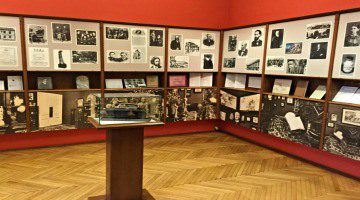Are you planning your Vienna itinerary? It may not be at the top of your list of things to do, but a visit to the Sigmund Freud Museum in Vienna is well worth your time.
Whether you’re a history buff, interested in Sigmund Freud’s work and life, or just want to know more about Vienna’s famous residents, the Freud Museum makes for an interesting visit.
In this guide, I share some of my own discoveries about the famous father of psychoanalysis. Turns out, we actually have a few things in common. 😉
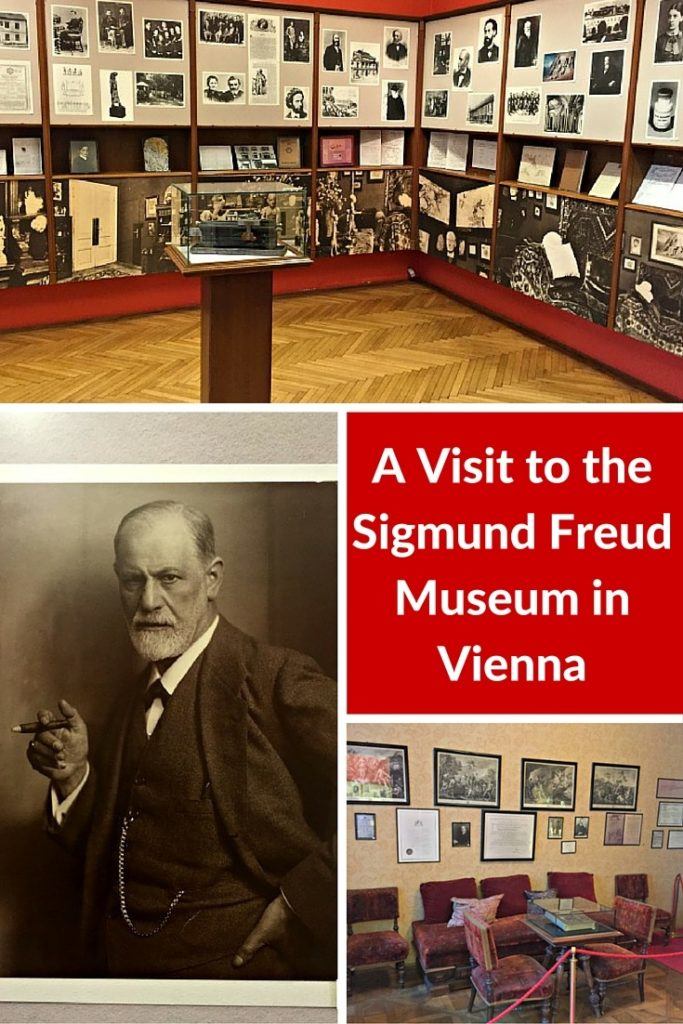
A Visit to the Sigmund Freud Museum in Vienna
UPDATE: Until May 2020, the Sigmund Freud Museum is under renovation. Please visit Berggasse 13 & Liechtensteinstraße 19 for a replacement exhibit, photos, a film, and a shop about Sigmund Freud. The locations are open daily from 10 a.m. – 6 p.m.
Arriving at Berggase 19, after a short walk from the metro station, I was hoping our visit to the Sigmund Freud Museum would be a good one.
Our time in Vienna wasn’t what we had expected thus far.
I entered the apartment building housing the Freud Museum and began up the stairs. Along the way, a timeline noting key events from Freud’s life and work guides you to the Museum. What I found instantly more interesting, though, was the feeling of walking in his shoes.
The Freud Museum in Vienna occupies the same building and apartment where Freud lived and worked. The building still has apartments where you’ll likely see local Viennese residents coming up and down the stairs going about their daily lives.
If you have a vivid imagination like me, you might expect to see the doctor himself trundling up the stairs, brown leather briefcase in hand!
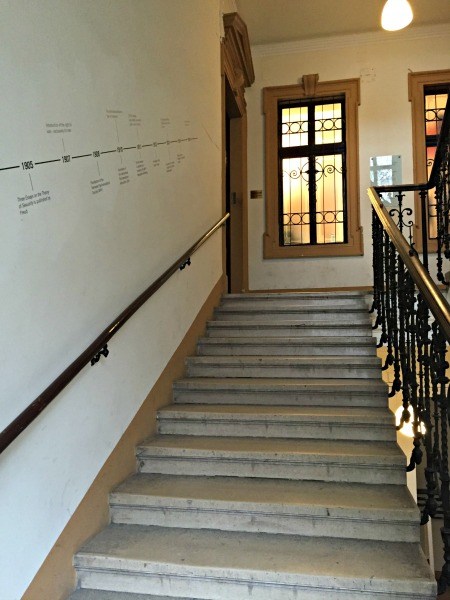
Before visiting the Freud Museum, I can say I knew very little about him. Most of my knowledge came from a Psychology 101 college course and common everyday expressions like a “Freudian slip” or “having an Oedipus Complex.”
In visiting the museum, I was hoping for something a bit more revealing into the man himself. You know, the good stuff you can’t read in a biography blurb.
Beyond interesting are those humanizing details that take a historical figure from the pages of a book and bring them to life in your mind’s eye. This depth of understanding can only happen with firsthand experiences.
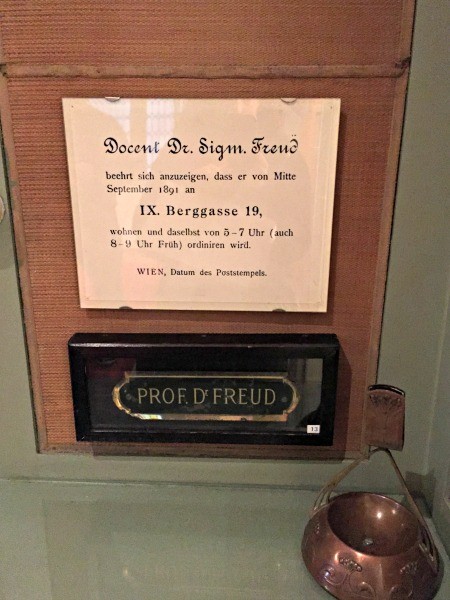
The entrance to the museum itself is through an apartment front door on a staircase landing. It’s complete with a nameplate announcing the residence and office of Sigmund Freud. Once past the ticket desk, the entryway holds a case displaying Freud’s hats, walking stick, briefcase, and luggage trunks.
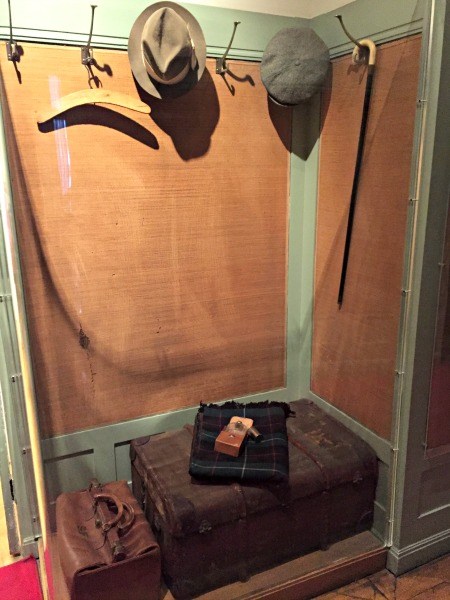
Enter Freud’s office space where the red velvet seating area and chairs are as they were when Freud used the room to host his Wednesday Psychological Society meetings. On these nights, he invited other doctors to join in the first discussions about psychology.
The wall hangings show photographs, academic acknowledgments, and black and white pieces of art depicting scenes of antiquity.
Freud was an avid antiquities collector. He frequented Viennese antiquity dealers regularly and, by the end of his life, had over 2000 objects in his private collection. A glass case displays some of his pieces.
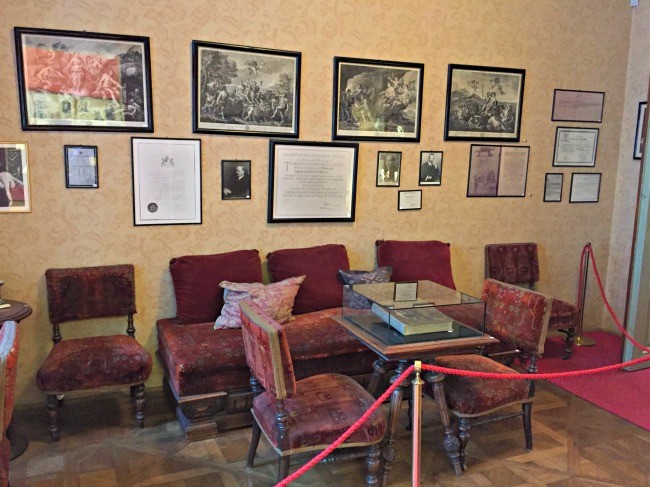
Stroll through the Museum’s remaining rooms and you’ll see Freudian artifacts lining the shelves in a somewhat overwhelming and dizzying display. I highly recommend using the audio guide and the printed booklet. They’re very helpful in piecing together the Museum’s collection.
I zeroed in on my questions. “Who was this guy, Sigmund Freud, aside from his distinguished accomplishments? How is he relatable?” I focused on sifting through the displays and finding clues about the person he was.
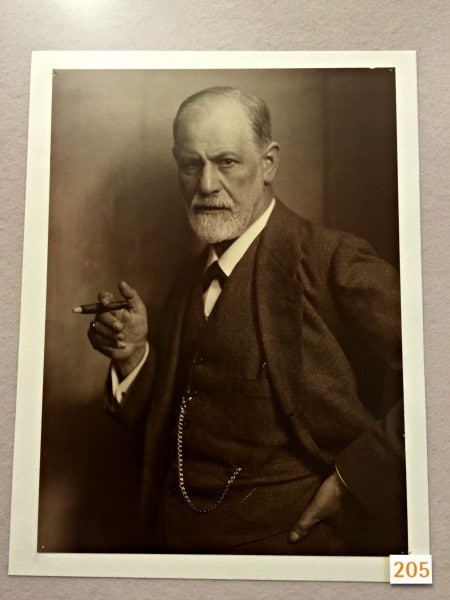
Almost instantly, I learned Freud loved to travel! He traveled to England, Italy, Switzerland, and the United States to name a few places. He loved his time away, saying it gave him the chance to relax and “draw fresh breath.”
He would write, stroll along the beach, and learn about a place’s history. Travel was a priority and Freud looked forward to his vacations with excitement and anxiousness.
It was clear Freud had the travel bug! Fellow travelers, our obsession is completely justified if the father of psychoanalysis openly professed his affliction! 🙂
He loved learning the history of ancient Rome while traveling through Italy. He was curious about what he’d find in tide pools along the beach. He was even a self-confessed Anglophile. The reflectiveness he used for his work seems to have carried over to his love for travel.
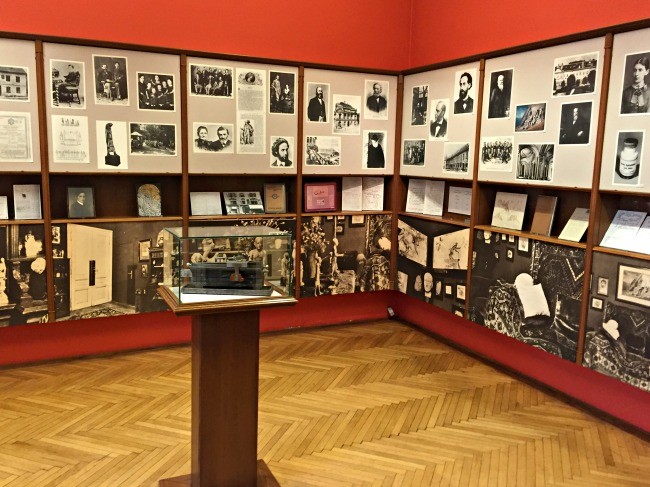
History tends to be learned in compact chunks of time, which is why I find it so interesting when pieces connect. I learned how Freud moved to Vienna from what is now the modern-day Czech Republic as a small boy.
He lived in Vienna nearly his whole life and would have died there had it not been for the rise of the Nazi party and increasing anti-Semitism.
Before visiting the Freud Museum, I never consciously realized how close Freud and his family came to being victims of the Holocaust. He was fortunate to have the necessary 31,000 Reich marks to buy safe passage out of Austria for him and his family in 1938.
Although he was urged by close friends to do this earlier, it wasn’t until his younger daughter Anna was interrogated by the Gestapo for nearly 12 hours that Freud made the fateful decision to flee to England.

I had never put these pieces of history together. It was incredibly thought-provoking to imagine what could have happened knowing the horrors of that time period.
More than that, though, it gave a glimpse into what Freud must have been thinking and feeling, first as a father whose beloved youngest daughter had had such a close brush with a horrible fate.
Then, as a lifelong Vienna resident who, despite his love-hate relationship with the city, must have suffered watching the awful changes happening around him. As an old man, he had to have been deeply saddened to leave his home.
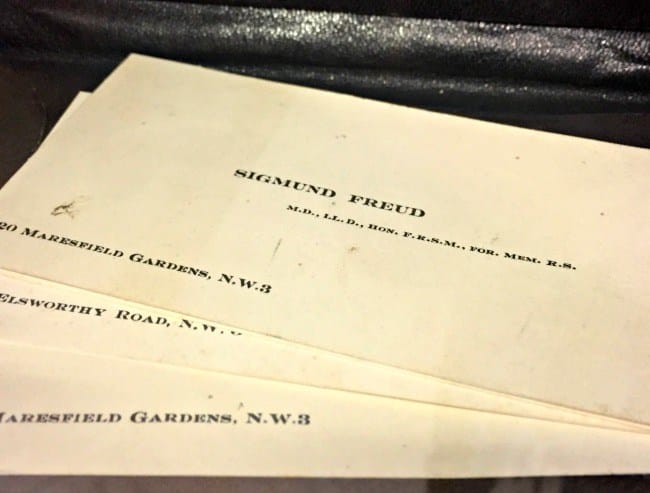
The photographs, stories, and letters also show how much Freud loved his dogs. He was a total dog person!
Freud had a few dogs during his lifetime but was especially bonded with his Chows. His first Chow, Jofi, sat in on patient sessions after Freud realized the dog had a calming effect on his patients. Jofi even let Freud know when sessions were finished by standing up and yawning at just about an hour’s time.
A second Chow, named Lun, left Austria with Freud when the family fled and had to be quarantined for 6 months. Despite his battle with oral cancer, Freud visited Lun as frequently as possible in the kennels until they could be reunited.
Freud even admitted to quietly humming and singing to his dogs!

I loved learning this the most. Yes, I’m an unabashed dog lover! If you are too, then you know the deep bond and the love that’s exchanged when doting on and even singing to your dog(s)!
What’s more, this is a side of Freud revealed through family letters and anecdotes, but was not likely widely known among his patients and professional peers. Reading about how Sigmund Freud loved and lost his dogs makes him so real!
It’s easy to transfer how any dog lover would feel and use this to relate and get to know him better.

With the visit complete, we headed to Cafe Landtmann, incidentally one of Dr. Freud’s favorite cafes, to enjoy a piece of cake and chat about the person we’d discovered.
Practical Info:
The Sigmund Freud Museum is open every day from 10:00 a.m. – 6:00 p.m.
Adult admission is 9 Euros. If you have the Vienna Pass, entry is free. The audio guide and collection booklet is available free of charge.
The Museum is accessible from the U2 and U4 metro lines. Aside from the permanent Sigmund Freud Collections, a couple of rooms house temporary exhibitions.
A trip to Vienna is easily combined with nearby Prague and Budapest.
Have you visited the Sigmund Freud Museum in Vienna?
Like this post? Please share it on social media using the share buttons below!

